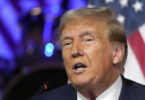Presentation of the annual budget for the next fiscal year in the parliament is a month ahead and the grim economic scenario is fast emerging, leaving now little room of maneuvering for the economic wizards like Ahsan Iqbal to repudiate the ground realities. In a disclosure that could jolt the country’s financial market, the International Monetary Fund (IMF) has assessed Pakistan’s net foreign currency reserves, after excluding its international payment liabilities, to be negative at $ 724 million. The situation seems this time to be worse than October 1999 created by the economic hit man Senator Ishaq Dar. Back then the foreign exchange net reserves were $ 600 million positive.
The IMF used to be the global lender of the first resort, in its Post Program Monitoring report has exposed the shallowness of the current gross official reserves of $12.1 billion, which are largely maintained by double booking of reserves and taking into account Chinese loans deposits under currency swap arrangements. It reflects the accounting gimmick bequeathed by the Finance Minster on long leave in London to his successor Miftah Ismael. As of February 14, net international reserves stood at minus $724 million-down from $7.5 billion in September 2016 when IMF three year Extended Fund Facility Program ended. The situation in February was that Pakistan’s payment liabilities in foreign exchange were $ 13. 5 billion as against its gross foreign currency reserve of $ 12.8 billion. The reserves further slipped to $ 12.23 billion by March 2, which indicates fast depletion of foreign currency reserves.
The worrying factor is that the gross official foreign exchange reserves declined despite significant external borrowing by the government, including several syndicated bank loans and issuance of Sukuk and Eurobonds worth $ 2.5 billion. The gross official reserves may further slip to $ 9.37 billion by June if the government does not succeed to get about $ 1.6 billion fresh loans to shore up the reserves to $12.1 billion. The rising external payments liabilities caused by widening current account deficit, escalating debt servicing on account commercial short-term expensive loans and CPEC related outflows will slow down the economic growth rate. In case the capital inflow remains slow the GDP growth rate will stagnate at 3 percent in the next fiscal year whereas the independent economists are even critical of the expenditure led growth rate of 4.9 percent of the current year when they compare it with the income-led economic growth of 8 percent in India and 7.76 percent inBangladesh.
As short term measures the government would need tight monetary policy by avoiding the election expenditure slippages in the form of releasing billions of rupees of development funds to lawmakers. A stronger fiscal discipline and decisive efforts to contain losses in the public sector enterprises are also inevitable to address external imbalances and fiscal risks. The cumulative losses of Pakistan International Airline are Rs. 320 billion and are still incurring annual losses of Rs. 40 billion. The losses of Pakistan steel Mill have reached Rs. 166 billion. That is why the De facto Finance Minister Miftah Ismael has made a generous offer that whoso pay the entire debt of PIA, he will get Pakistan Steel Mill free of cost, the inventory landed other assets of which are worth hundreds of billions. It was because of immense value of its assets that Supreme Court of Pakistan stopped its sale for $ 270 million in 2007 when it was earning reasonable amount of profit.
The main reason for the ballooning current account deficit is that national interest was ignored in the Free Trade Agreement with China and Preferential Trade Agreements with Indonesia and Turkey. The imports from these countries are exempted from tariffs and non-tariff restrictions whereas heavy import duty is charged on Pakistani exports besides quota restrictions and Quarantine formalities. Pakistan’s decision to control import bill through administrative measures like imposing regulatory duties and maintain cash margin requirements has limited effect as foreign currency reserves continued to decline. The solution lies in boosting exports by taking immediate measures for improving the economic environment through reduction in tariffs of energy inputs and rationalizing the number and structure of indirect taxes.






